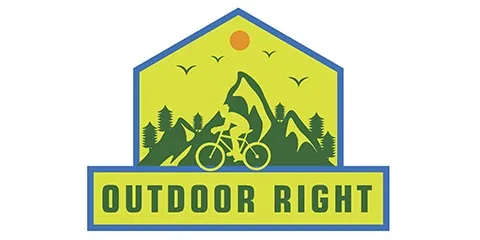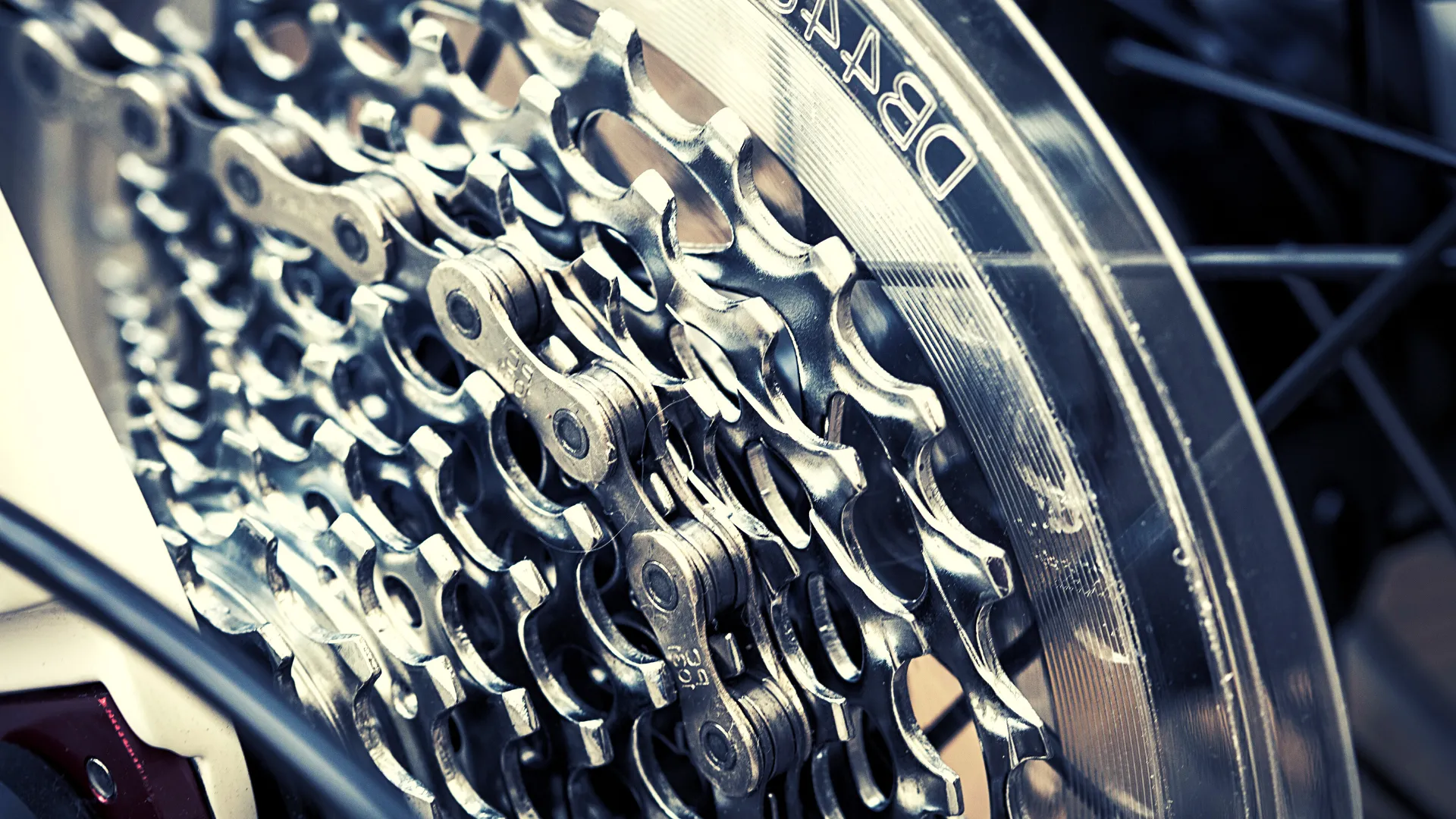The freewheel vs cassette controversy rages on, and it’s easy to understand why. Most bike dealers use the two names interchangeably, and so instead of creating clarity among riders, they end up confusing them amore.
Since you are here, I don’t want you to waste time or money like I did when I knew nothing about the bike’s gear system.
Generally, modern bikes come with a cassette system, which is an updated version of the freewheel.
We will look at what these two systems are, their differences, and pro and cons. I’ll also help you decide between them and identify if you have a cassette or freewheel.
Furthermore, we’ll answer the top most frequently asked questions about the two systems. So let’s get started!
Table of Contents
What is a Freewheel?
A freewheel refers to a single set of gears screwed onto the bike’s rear wheel. This mechanism locks when you pedal the bike frontward, forcing the drivetrain to drive the wheel.
Though the gear set is screwed onto the bike’s rear wheel, it usually spins at will when you do not pedal or move backward, thus the name freewheel.
What is a Cassette?
In contrast, a cassette is a set of sprockets found on the bike’s rear hub, firmly held in place by a lockring. A typical bicycle cassette can have 5-13 sprockets, albeit modern bike drivetrains use 9-11.
As I mentioned earlier, a cassette is an updated freewheel. So, expect the modern bikes to come with the cassette as opposed to a freewheel.
Difference Between Freewheel and Cassette
a) Sprockets
In a cassette, the sprockets are bolted together, featuring three small bolts. The small bolts keep the sprockets in position when detached from the ratchet.
In a freewheel, in contrast, the sprockets are slid into the splines and held into position with a lockring.
Consequently, by looking at how the sprockets are attached, you can tell if you have a freewheel or cassette.
b) Installation and Removal
A standard freewheel is screwed into the hub. And when you pedal, the freewheel tightens down. As a result, you don’t need any unique tool to install it.
However, it would help if you had a unique tool, a freewheel extractor, to remove it. That’s because it tightens a lot when you pedal during the installation.
As for standard cassettes, they need a spline tool for installation and removal.
c) Swapping
Generally, if you opt for a freewheel, you’ll have to stick with it. In the same way, if you opt for a cassette, you’ll have to stick with it.
That means you cannot swap one for another. What you can do is update the whole thing, the hub.
Not only is swapping difficult, but you’ll have to match your new freewheel or cassette with the speed of the original, which is not easy.
As a result, you have to carefully consider this aspect when shopping for a newer bike to avoid losing money.
d) Usage
Given that freewheels are tricky to change and have fewer gears, they are best for casual riding on a cruiser bike. They suit riders who prefer to take up a slow speed, especially when riding on the streets.
On the contrary, cassettes are best for road biking or mountain biking. That’s because they are lighter and easier to change.
That also means they are great for riders who want high speed and are more likely to take on different challenging terrains.
However, you should note that you are more likely to replace a cassette because of this flexibility.
e) Gear Speed
The freewheel commonly comes with 5-speed, 6-speed, or 7-speed capability. So, don’t expect to have a higher speed on this system.
If you want a higher speed, consider cassettes. They are commonly available in 7-speed, 8-speed, and 9-speed options. There are a few bikes, however, that use 10-speed cassettes.
Bike Freewheel Vs Cassette: Pros And Cons
Freewheel Pros and Cons
Pros
- Great for casual cycling due to fewer gears
- Allows reversal threaded-locking
- A suitable fast-speed maker
Cons
- Hard to change
- Less available, given that it’s an old version
Cassette Pros and Cons
Pros
- Lighter, thus convenient for speedy riding
- Higher gears, thus suitable for adventurous cycling
- Readily available because modern bikes feature it
Cons
- Slightly costlier than a freewheel
Cassette Vs Freewheel: Which Is Better For You?
There is no straight answer to this, and like most people would answer, it depends. It depends on the bike type and cycling behavior.
Essentially, freewheels are common on older bike models. Remember, we are not talking about the vintage-style models, but bikes dating a few years ago.
But what’s more important is the fact that freewheels are ideal for casual riders.
Speaking of casual riders, I’m talking about those cyclists who ride gently and slower, especially in the streets and around the neighborhood. That’s because these bikes have fewer gears.
Concerning cassettes, they have more gear speed, making them the best choice for the adventurous cyclist, like one mountain biking in bear country.
But given that modern bikes come with the cassette, you don’t have much choice if you are buying a bike today. So, you’ll have to concede to settling for a cassette bike.
FAQs Freewheel vs Cassette
The freewheel is threaded onto the hub’s rear end, whereas the cassette is not. Instead, the cassette is just a group of gears flawlessly bolted together.
While the freewheel moves when you are not pedaling, a cassette lack such mobility.
- Cog Sizes: 11 x 25t, 11 x 28t, 11 x 30t, 11 x 32t, 12 x 25t, 14 x 28t
- Cog Material: nickle-plated steel
- Freehub Type: Shimano 11-speed road
- Carrier Material: aluminum
- Claimed Weight: [11x25] 8.2oz (232g), [11x28] 8.9oz (251g), [11x30] 9.5oz...
Do I Have a Cassette or Freewheel?
You can tell if you have a cassette or freewheel with these simple steps:
- Remove the bike’s rear-wheel
- Locate the tool fitting on the sprockets
- Backward-spin the sprockets
If the tool fittings comfortably spin with the gears on the rear wheel (the cogs), then the system is a cassette. If they fail to spin, then the system is a freewheel.
That’s how you differentiate the bike cassette vs freewheel.
Remember also that cassettes are the newer versions of freewheels. So, if you recently bought your bike, the chances are that the system is a cassette and not a freewheel.
Can I change Freewheel to Cassette?
You cannot change from a freewheel to a cassette by simply swapping components. Freewheels are clamped onto a rear hub with a smooth shaft, fixing the tool fittings to the hub. On the other hand, cassettes slide onto a keyed shaft and are clamped in place by a nut, which rotates with part of the hub.
The only way to change from a freewheel to a cassette requires you to purchase a new rear wheel equipped with a hub that is compatible with a cassette. It is important to keep in mind the difficulty of converting the two mechanisms when deciding between a freewheel vs cassette system.
Are Cassettes and Freewheels Interchangeable?
The main difference between freewheel and cassette is the mounting method to the rear hub. As mentioned above, freewheels rely on a clamp mount onto a smooth shaft, whereas cassettes rely on a keyed rear hub and a nut that clamps everything firmly to the wheel.
The result of the different mounting techniques for freewheel vs cassette is that they are not interchangeable. A rear hub that is compatible with a freewheel will not be compatible with a cassette and vice versa. Riders must purchase a rear wheel and rear hub that is compatible with their desired system.
Is a Cassette Better Than a Freewheel?
It depends on the bike that you have and what kind of rider you are. If you have an older bike design, the chances are that it has a freewheel and the system is essentially an excellent choice for casual cyclists.
However, if you have a newer bike model or plan to get one, consider a cassette. It’s best for the adventurous cyclist.
How do I know if I have a Freewheel or Freehub?
The difference between a freewheel and a freehub is the design of the coasting mechanism. A freewheel system, as described above, relies on an assembly internal to the gear cluster to coast. A freehub system, on the other hand, relies on a coasting mechanism that is internal to the hub of the rear wheel.
To identify the mechanism on your bike, remove the rear wheel and spin the gear cluster backwards. If the center of the gear cluster, known as the tool fittings that connect the gear cluster to the hub, does not move, you have a freewheel. However, if the tool fittings do move with the gear cluster, you have a freehub.
As a note, freehubs are the mechanism used in conjunction with cassettes. The mechanism is referred to as a freehub because the hub can move freely relative to the gear cluster, or cassette.
In Conclusion
I hope the difference between the freewheel vs cassette is clear. As a recap, freewheels are identified with older bikes and are best for casual cycling.
Cassettes, in contrast, are identified with the modern bikes and are best for adventurous cycling.

Mitchell Turk is outdoors enthusiast with a lifelong passion for bicycling. He previously worked at his local bike shop before entering the world of engineering, and he may even enjoy geeking out over bike tech more than riding his bike!
Originally a roadie, Mitch dabbled in mountain biking for a couple years and then jumped on the gravel bike bandwagon. He now spends his free time seeking out gravel rides and weekend-long excursions. His ideal outing combines biking, hiking, and climbing for a whole-mountain adventure.



